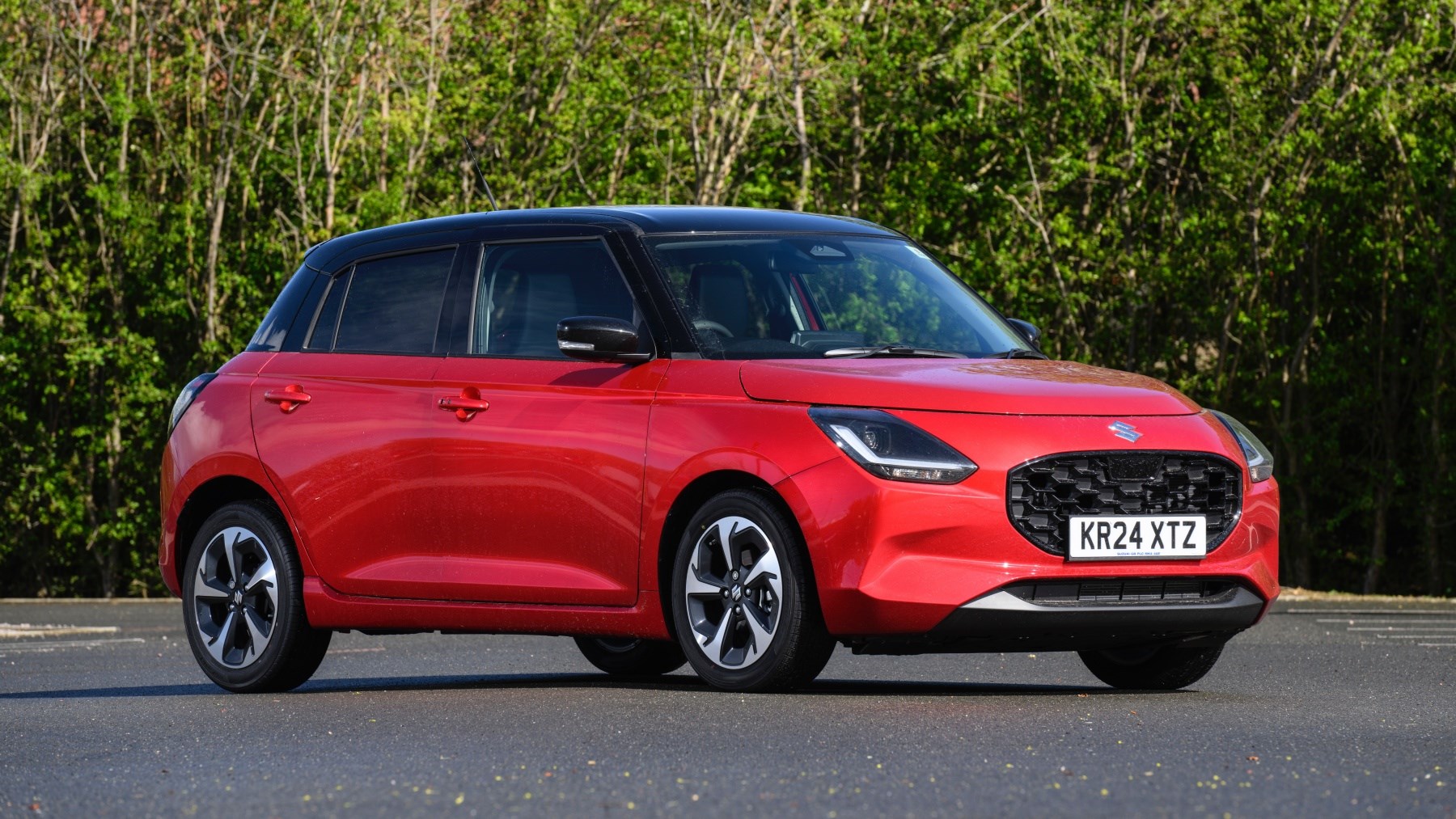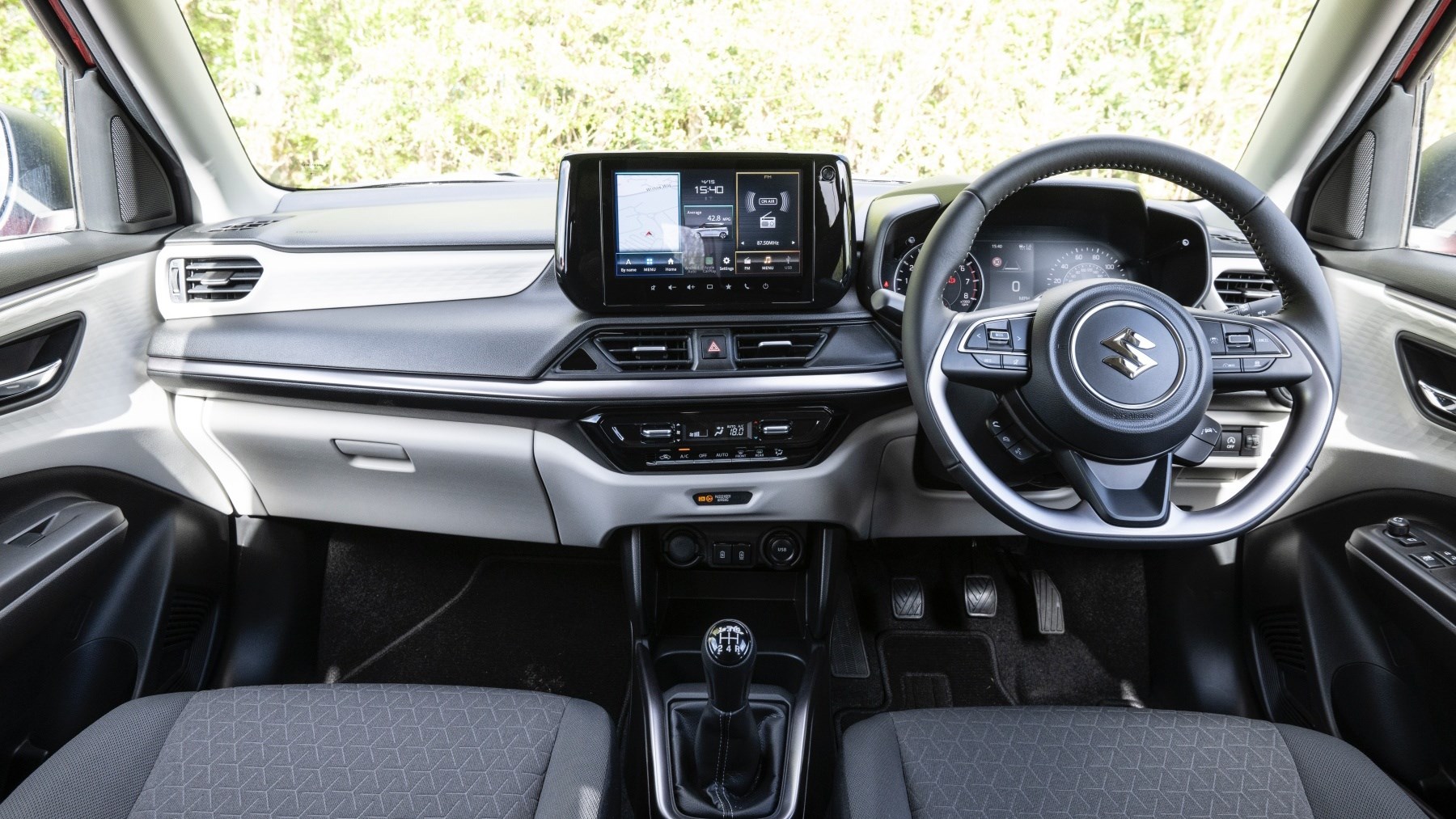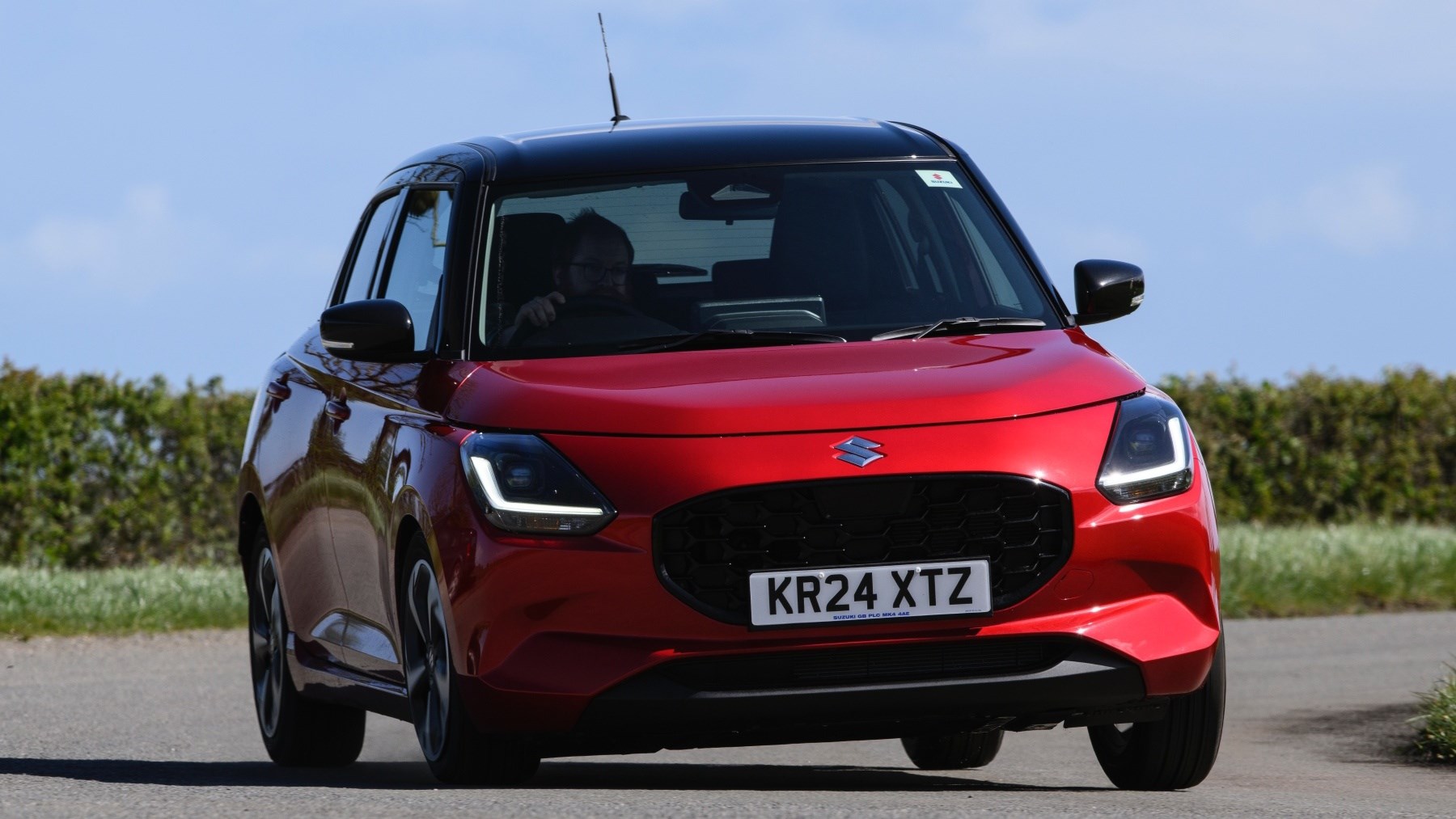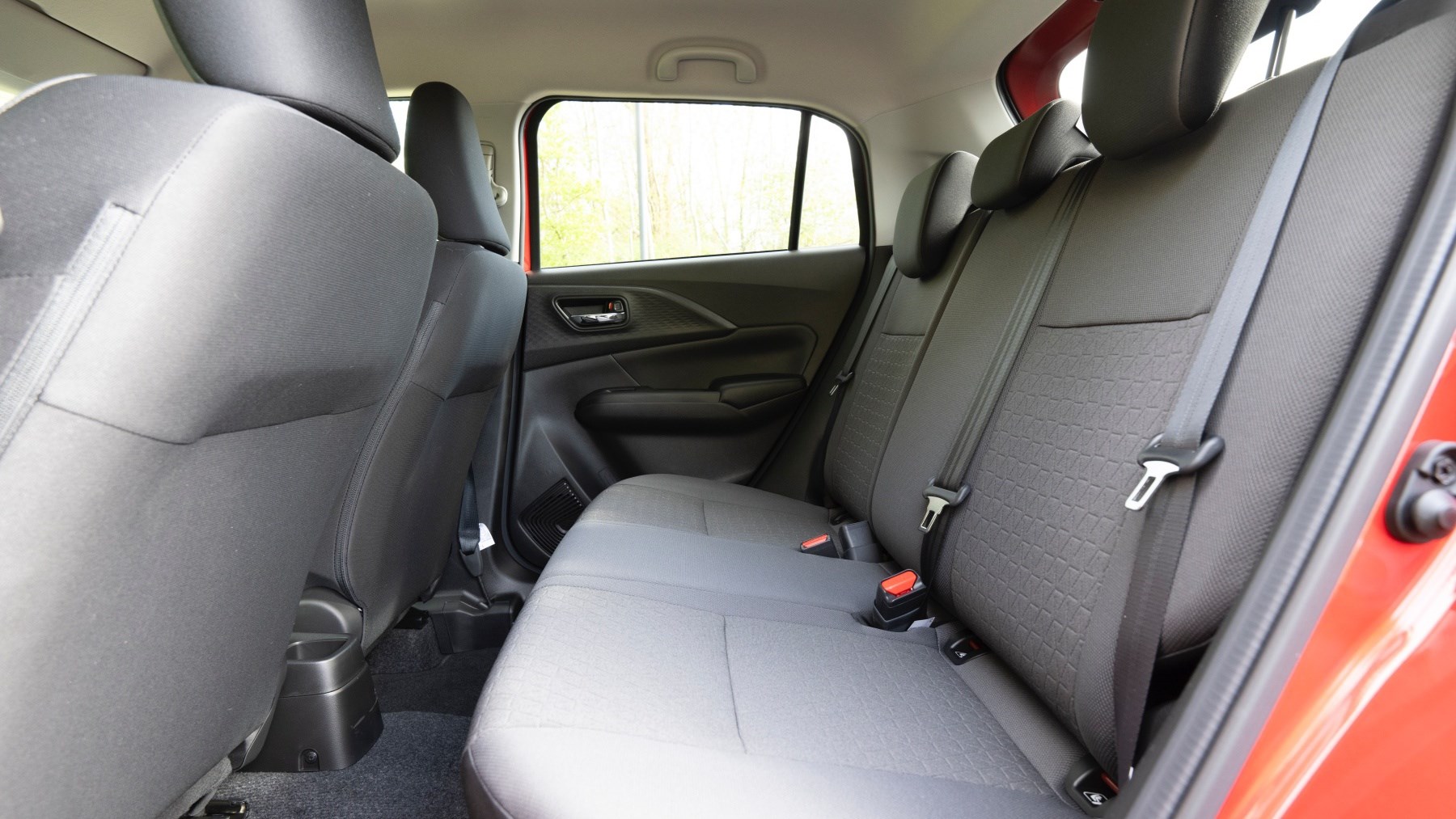► 2024 Suzuki Swift Hybrid review
► Back in its fourth generation
► A revised supermini tested
It’s a tough time to sell small cars. With profit margins getting ever slimmer and demand for SUVs increasing, releasing a new Suzuki Swift could almost be seen as foolish. However, plucky Suzuki sees an opportunity here, swooping in to hoover up sales no longer destined for bigger brands.
After all, the ongoing popularity of small SUVs such as the Ford Puma, Kia Stonic and Nissan Juke have killed the once popular Fiesta, Rio and Micra. Indeed, Suzuki estimates 250,000 Britons will be left without a direct replacement to the supermini they bought within the last three years.
Enter the fourth-generation Suzuki Swift hybrid. An evolution rather than a revolution of the familiar name, Suzuki has set its sights on grasping what will soon become an enticing gap in the market with a new model, resplendent in modern tech but still supping petrol to suffice the public’s needs.

Read on for our full review of the new Suzuki Swift, as we reveal how it drives, what the interior is like and how it stacks up to competitors.
At a glance
Pros: Great economy, slick manual gearbox, fun to drive
Cons: Cheap and scratchy interior, not very powerful
What’s new?
Quite a bit, but let’s start with the engine. Rather than outsourcing the hybrid technology to Toyota like Mazda did with the 2 Hybrid, Suzuki kept things in-house. The four-pot of the old car has been given the chop to make way for an all-new 1.2-litre, three-cylinder mild hybrid engine. It’s about as powerful as the unit in the old car, but it’s now 8% more fuel efficient, produces less CO2 and can push the car from rest to 62mph nearly a second faster.

Both inside and out, the new Swift has been re-styled. The car is still based on Suzuki’s lightweight HEARTECT vehicle platform and so the dimensions haven’t changed, but the headlights and front grille have been revised to give the car a more contemporary look while the rear tailgate has been refreshed with an integrated rear hatch spoiler, among other changes.
Suzuki has worked hard to improve the aerodynamic efficiency of the car with a series of exterior amendments, while a new adhesive has been introduced to the under body to reduce noise, vibration and harshness.
Several adjustments have also been made to the Swift’s suspension setup. The front stabiliser bar has been adjusted to improve roll rigidity while at the rear, the suspension has been fettled with to allow the back wheels to glide over changing road surfaces more comfortably.
What about the interior?
Just as the exterior has been re-styled, so too has the car’s cabin. The Swift starts from £18,699, so it’s no surprise that the interior isn’t resplendent in luxurious materials. Hard, scratchy plastics are abundant and soft surfaces rare, but it all looks decent and there are plenty of physical controls for stuff like the climate control and heated seats.

In fact, the interior feels no less luxurious than a bottom-spec Vauxhall Corsa. Suzuki has focused on sustainability in its choice of materials while opting for a series of funky surface design textures to liven the cabin up. Do they work? Yes. The cabin isn’t exactly plush nor does it scream artistic flair but it’s a nice enough place to be and feels up to date,
There’s a case to be made that what the Swift falls short on in material quality, it makes up for in interior tech, as a 9.0-inch infotainment display, wireless Apple CarPlay/Android Auto connectivity and heated front seats are all included as standard.
The seats themselves are supportive and comfortable enough on shorter runs with decent mechanical adjustability, though it does feel like you sit rather high up and the foam bases are rather hard. Front space is good, and there’s loads of headroom front and rear. Legroom in the back is good for the class but not palatial. It is a supermini after all…
How does it drive?
The last Swift was lauded for its cheap date driving pleasures, and the newest offering follows suit. Owing to the aforementioned suspension updates and its light kerbweight, the Swift feels nimble on the road, capable of controlling its body well through corners for an all-round gratifying driving experience.
With 81bhp, the Swift doesn’t have the power to push you back in your seat, but its slick manual gearbox is one to savour. Couple its short throw and precise action with the car’s well-weighted steering and it becomes a joyous thing to hang through the bends. It feels nimble, well-balanced and agile despite a fair bit of body lean. Most rivals feel lead footed in comparison.
The new Swift is also available with an optional CVT gearbox. We didn’t get a chance to try it, but we suspect it won’t be a box worth ticking for those in search of an engaging experience. For the less speed-conscious Swift drivers , it probably won’t make much of a difference. We’ll report back our findings when we’ve tested it.
Performance isn’t exactly sparkling, but it’s sufficient for this sort of car and feels strong enough on the motorway. The mild hybrid system means the engine can slog from well under 1500rpm, making it feel like a bigger, torquier lump in part throttle situations. You’ll still need to rev it out to find the power, though.

As for the ride, the Swift cushions well enough for the class. You’re aware of bumps and crevices passing beneath you, yet it’s less twangy and more settle than its predecessor. It’s more comfortable than a Yaris or Mazda 2 Hybrid, that’s for sure.
What about the specs
With so many updates, many of the Swift’s data figures have also been refreshed. The mild hybrid three-cylinder engine produces the same 81bhp as the old four-pot model, but it now has a quicker 0-62mph time of 12.5 seconds – 5% faster than before. Its torque rating is 83lbft at 4,500 rpm, and flat out it’ll do 103mph in Motion spec or 106mph in Ultra. The Swift’s ALLGRIP four-wheel drive variant can’t quite match that, with a top speed of 99mph.
With its electric assistance, this engine is kinder to the planet, too. The new Swift has a combined WLTP fuel consumption rating of 64mpg and produces 99g/km of CO2 (106 in Ultra spec, 110 with ALLGRIP). Being a mild hybrid, the Swift can’t be charged up from the plug like a full EV, but instead uses energy regenerated when braking to help power the vehicle and improve efficiency. Despite our best efforts, we couldn’t get it to do less than 50mpg over a few days use.
Before you buy (trims and rivals)
In line with the Swift’s minimalist ethos, Suzuki has kept the trim range short. There are only two grades to choose from, Motion and Ultra, but even in base-spec you get plenty included in the list price.

Motion trim includes adaptive cruise control, a nine-inch infotainment display and many driving assistance features as standard, among a long list of other technological supplements. On top of Motion’s tech list, Ultra line cars receive automatic air con, electrically folding door mirrors and a handful of other extras.
Manual Motion cars start from £18,699, while a manual Ultra will set you back £19,799 – are the add-ons worth the extra £1,100? Probably not – it strikes us that with so much included in base-spec, Motion cars really are the bargain choice and likely the models to go for.
Verdict
Since 2004 Suzuki has sold over nine million Swifts. It’s been one of the great success stories of Japan’s automotive industry, relying on back-to-basics functionality with few frills for a great price. It’s unlikely this new Swift will upset the wasabi cart, as it carries much of the same ethos over while bringing the model up to date in 2024 with all the requisite tech and a little more polish.
Yes, the interior is a little harsh to the touch and the boot a little small, but the new Swift remains cheap, well-equipped and is more efficient than ever. Crucially, it feels like a light, nimble thing that reminds us that you don’t even need 100bhp to have a jolly good time.